Opinions on Brockage Large Cent
 jacrispies
Posts: 1,262 ✭✭✭✭✭
jacrispies
Posts: 1,262 ✭✭✭✭✭
This is what I interpret as a flip over brockage double strike on an 1814 large cent. Indentation of the stars, date, and the top of Miss Liberty's hair are shown on the reverse. I am almost certain this is genuine, with the incuse devices having the qualities of pre-strike, and having the characteristics of other comparable examples. What do you think?





"But seek ye first the kingdom of God and His righteousness and all these things shall be added unto you" Matthew 6:33. Young fellow suffering from Bust Half fever.
BHNC #AN-10
JRCS #1606
0
Comments
I'll just say two things... it's an S-295 plain 4, and it's very cool. I'll let the error experts comment beyond that (because knowing me, I'd get fooled by a vice job, lol).
Early American Copper, Bust and Seated.
Me thinks this requires some serious examination. I'm standing by.
BST: endeavor1967, synchr, kliao, Outhaul, Donttellthewife, U1Chicago, ajaan, mCarney1173, SurfinHi, MWallace, Sandman70gt, mustanggt, Pittstate03, Lazybones, Walkerguy21D, coinandcurrency242 , thebigeng, Collectorcoins, JimTyler, USMarine6, Elkevvo, Coll3ctor, Yorkshireman, CUKevin, ranshdow, CoinHunter4, bennybravo, Centsearcher, braddick, Windycity, ZoidMeister, mirabela, JJM, RichURich, Bullsitter, jmski52, LukeMarshall, coinsarefun, MichaelDixon, NickPatton, ProfLiz, Twobitcollector,Jesbroken oih82w8, DCW
I don’t think it is a genuine brockage
Do you mind expanding on your thoughts?
"But seek ye first the kingdom of God and His righteousness and all these things shall be added unto you" Matthew 6:33. Young fellow suffering from Bust Half fever.
BHNC #AN-10
JRCS #1606
The convexity of the obverse is very suspicious. Notice how the negative impressions in the reverse only show opposite where the obverse border is pushed down? I think it is an old vice job, possibly contemporary to when 1814 cents were new, but not something that happened in the Mint.
Early cent errors can look strange and suspicious, even the genuine ones. To me this coin has all the hallmarks of a vice job, EXCEPT the strange incuse dentils at the reverse rim. It’s hard to see how squeezing against another coin could cause that look.
I’d give it the benefit of the doubt, subject to an in hand inspection. I’d be looking for evidence that the reverse letting was struck over the incuse elements, rather than “vice” versa.
Edit: on balance after looking further, I don’t think it was done at the mint during striking.
Much appreciated for the opinions so far. I have a few points for discussion.
Now, the highest point of the obverse is the portrait, correct? If it was a vice job, there would be central damage on the coin from the obverse impression. For this to work, the coin making the impression would need stars that are a couple millimeters taller than the portrait.
There is also no displaced metal.
The interaction between the incuse stars and letters in relief show qualities that it was pre strike. For example, the letters were not smushed downward. There was no metal in that star areas to begin with.
"But seek ye first the kingdom of God and His righteousness and all these things shall be added unto you" Matthew 6:33. Young fellow suffering from Bust Half fever.
BHNC #AN-10
JRCS #1606
Usually with a squeeze, the obverse details are “mushy” the way yours are, but there is no specific damage if that side was squeezed against a smooth surface. I can try to find some other squeeze examples for you to look at.
It can be hard to say what the lettering would look like if the incuse design was already on the planchet at time of striking. But I’d expect to see more metal flow. Look at the O in OF. It is sharply separated by the incuse design element, which makes me think it was over struck by it.
Vice behavior could be done with a vise, but my first impression was the same as the OP explanation because there appears to be no cratering from displaced metal - some of the stars are deep. I will leave it to those who can view in-hand.
If it was a brockage, there would be a deep impression of that portrait. There is none, other that the very tops of the curly hair.
This piece is slightly cup shaped, and only the rim of that cup contacted another coin. There is no Mint procedure that I am aware of that would cause this effect.
Interesting thread! I'm along for the ride on this one... nice discussion.
Successful BST transactions with: SilverEagles92; Ahrensdad; Smitty; GregHansen; Lablade; Mercury10c; copperflopper; whatsup; KISHU1; scrapman1077, crispy, canadanz, smallchange, robkool, Mission16, ranshdow, ibzman350, Fallguy, Collectorcoins, SurfinxHI, jwitten, Walkerguy21D, dsessom.
Wisdom has been chasing you but, you've always been faster
Dont know enough about brockages to tell you why, but it looks off to me, perhaps a genuine coin but manufactured error... I'm not sure, it is very neat though!!
."It's a dangerous business... going out your door. You step onto the road, and if you don't keep your feet, there's no knowing where you might be swept off to" -JRR Tolkien_________________________________________________________________________________________________________________________________________Outstanding BST transactions as a seller, buyer and trader with: ----- mustanggt, Kliao, claudewill87, MWallace, paesan, mpbuck82, moursund, basetsb, lordmarcovan, JWP, Coin hunter 4, COINS MAKE CENTS, PerryHall, Aspie_Rocco, Braddick, DBSTrader2, SanctionII, Histman, The_Dinosaur_Man, jesbroken, CentSearcher ------ANA Member #3214817
Here are a few photos to compare with.
1814 O-104 Double Struck Brockage from Sheridan Downey's website. Incuse stars on obverse, and apparent minor devices on the reverse, although they are difficult to see. Notice how the metal flow behaves around the incuse stars, in relief stars, and the field on the obverse. All central devices have been completely erased with the second strike.
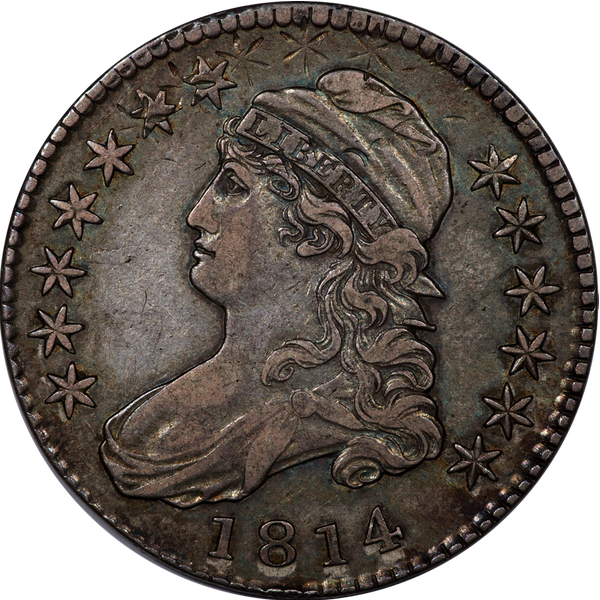
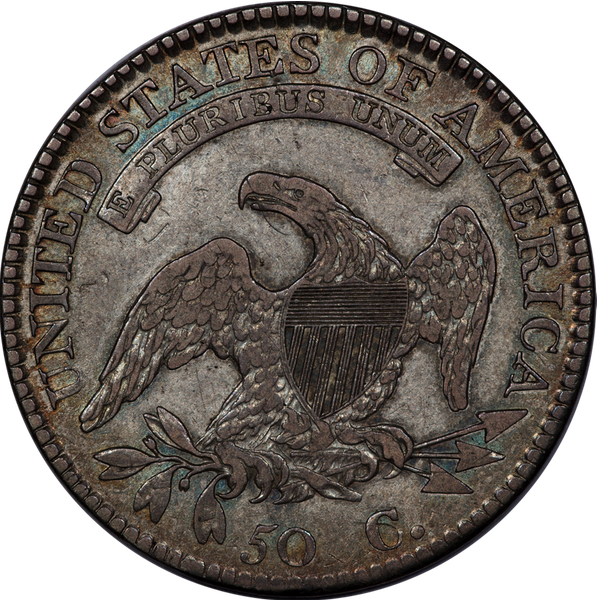
1814 S-295 Double Struck Reverse from Heritage. Reverse has obvious signs of being double struck, obverse is somewhat flattened from it being a brockage maker. Notice the convexity of the obverse is nearly identical to the OP coin in question. Also notice the strange reverse dentilation pattern.
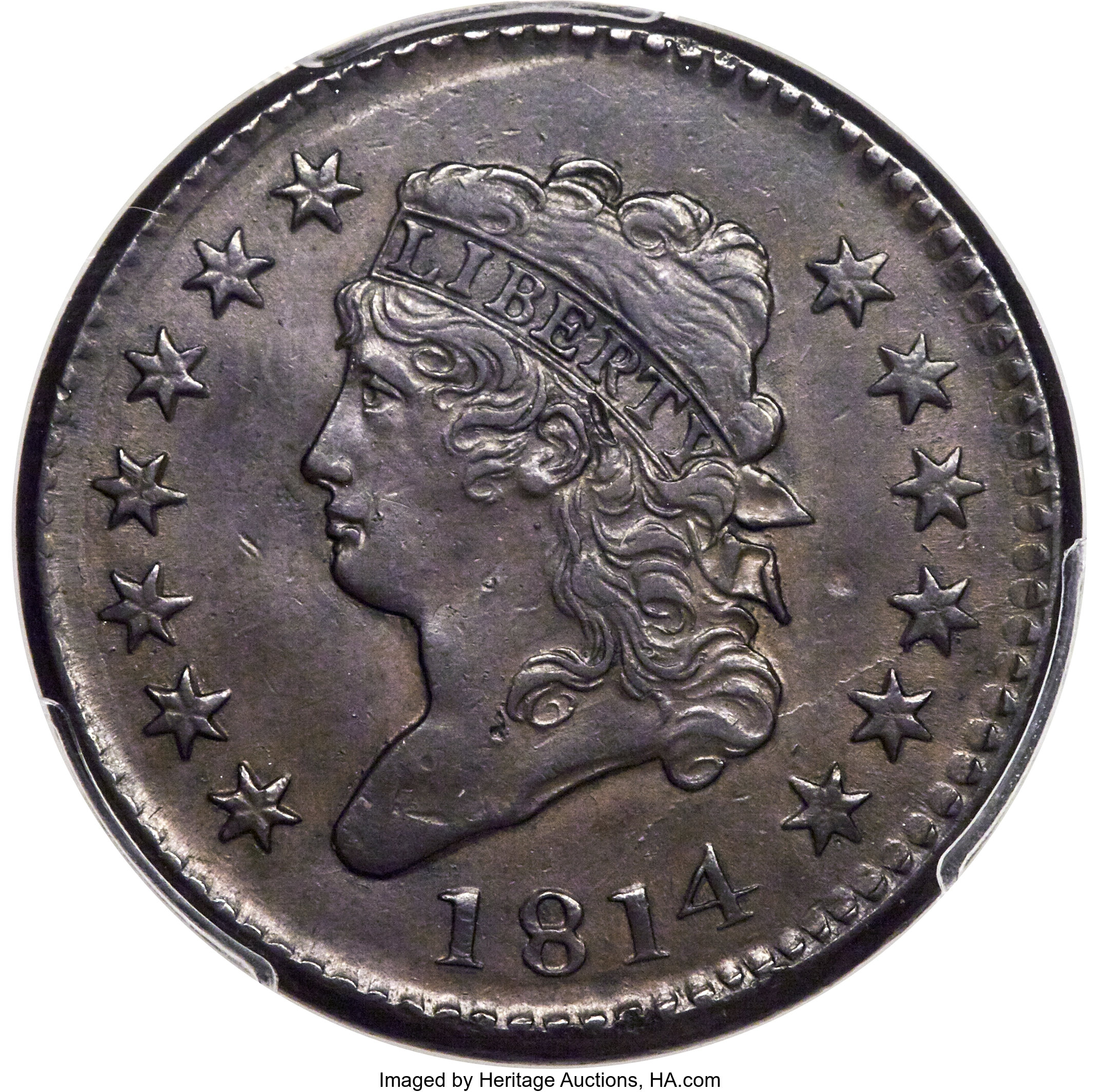
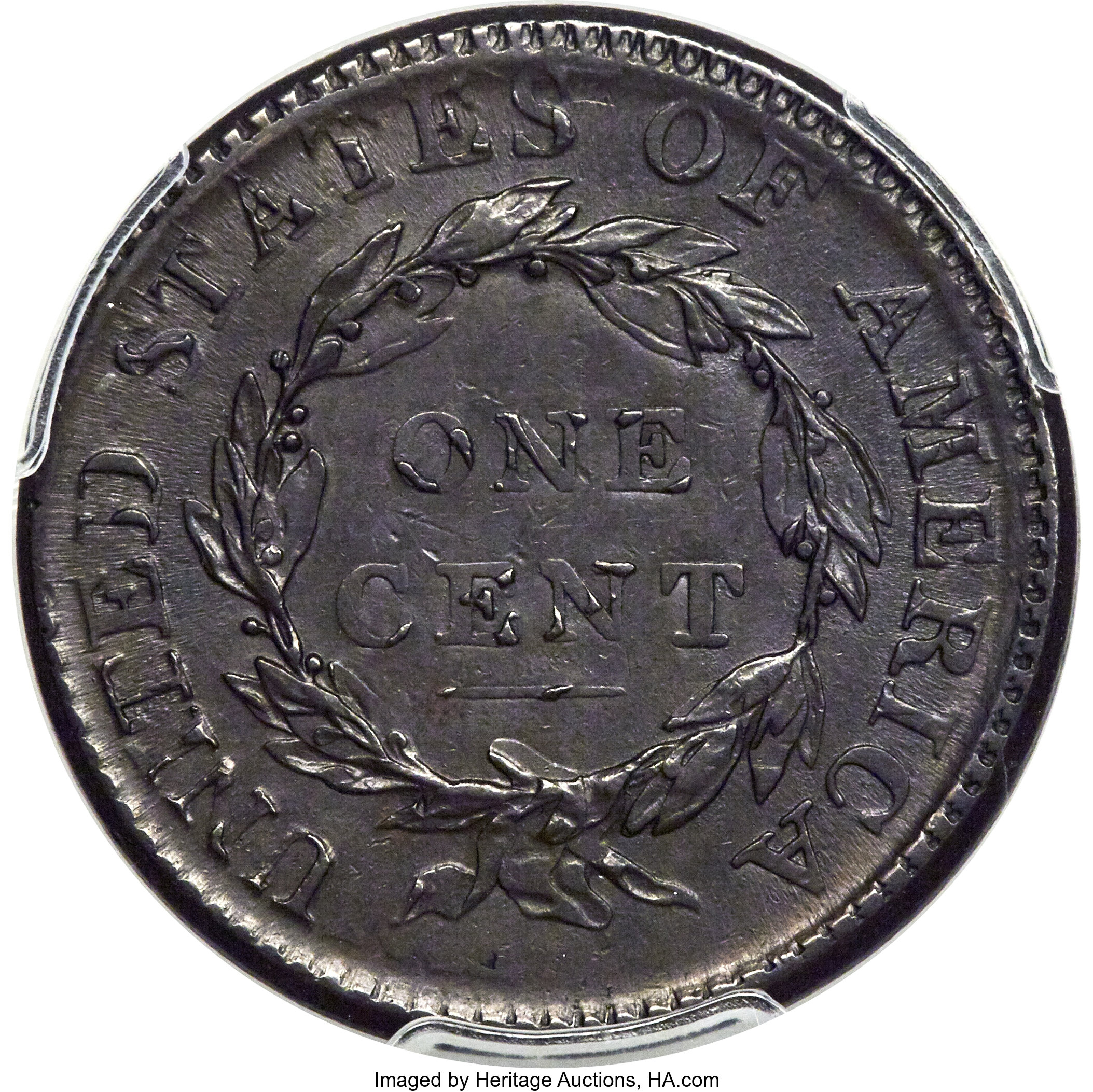
1798 S-169 Double strike, first strike reverse brockage. Note on this example the reverse brockage is visible in the peripheral, but no central devices are seen.

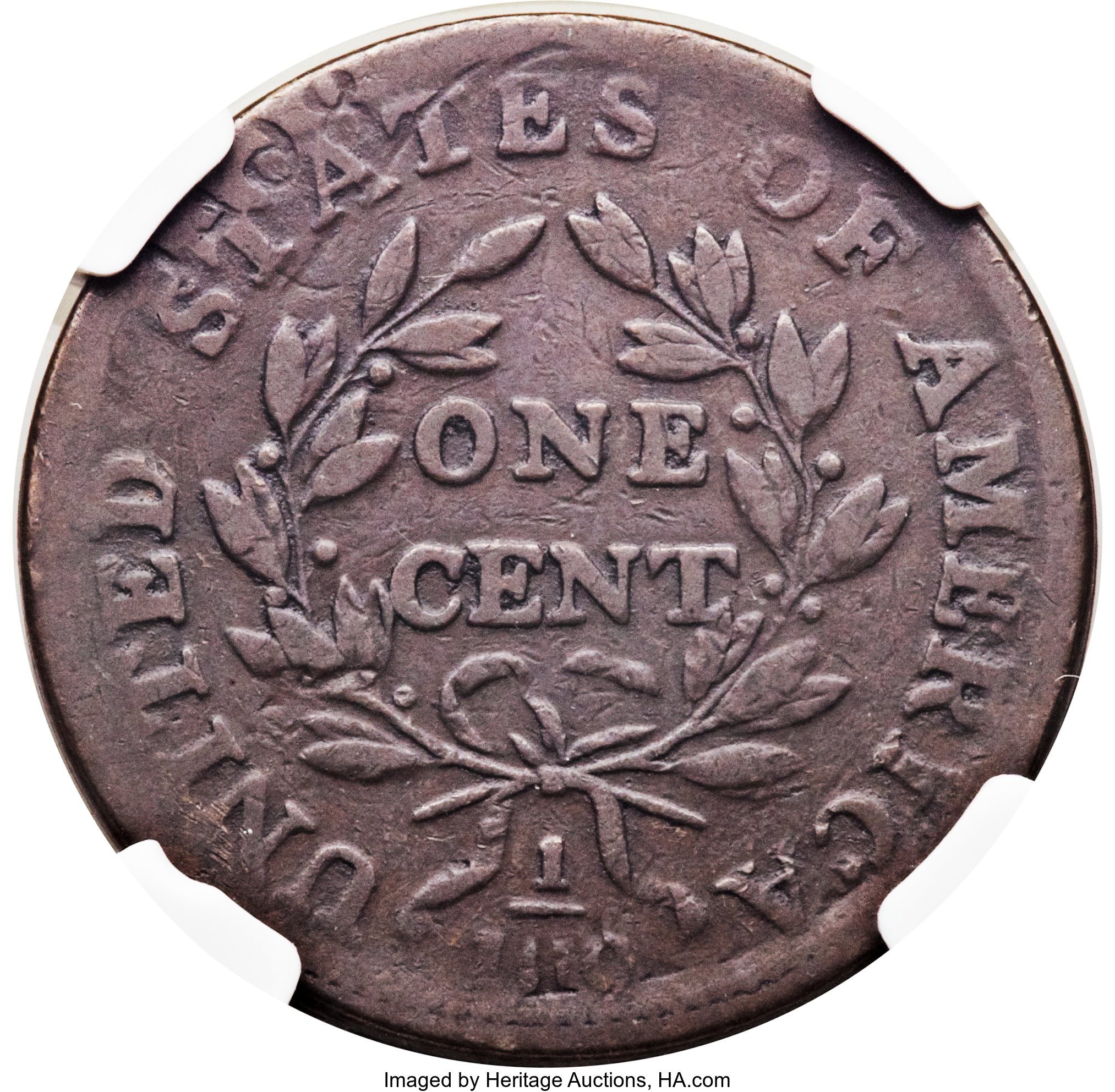
"But seek ye first the kingdom of God and His righteousness and all these things shall be added unto you" Matthew 6:33. Young fellow suffering from Bust Half fever.
BHNC #AN-10
JRCS #1606
I shall study them tomorrow.
OK, let us begin with Sheridan Downey's 1814 half. I agree that the incused stars at the top of the obverse of the second strike are a partial brockage from an earlier strike on this planchet/coin, generally flattened down and out by the field of the steel die that made the second strike. I do not know what happened to the rest of the brockaged first impression of the obverse which should have appeared under the obverse of the second strike. I do not know what happened to the normal obverse of the first strike which should have appeared under the normal reverse of the second strike. I acknowledge the incused denticles above the stars which resemble the incused denticles on your coin.
Look at the raised stars number 6 & 7. See how the incused stars from the brockaged first strike were flattened out and made thin by the steel field of the die during the second strike, except where the negative stars from the brockaged first strike fell under the holes in the obverse die that formed the stars of the second strike, There the incused star points are much stronger, deeper and wider than the star points that fell under the field of the steel die, simply because the fields of the opposing dies are closer together and generate much more pressure.
The same principle should have held true for the incused bust from the first, brockaged strike that fell under the raised bust of the second strike. However, there are only remnants of a brockaged strike in the cap and through LIBERTY to the hair above the temple. I suspect that the brockage was a partial brockage caused by the earlier coin being struck offcenter and then being struck into this planchet/coin during its first strike.
Now look at your closeup of the stars overlapping OF AMERICA on your coin, specifically the star overlapping the first A of AMERICA. The star appears to be of uniform depth and strength, whether it is overlapping the incused letter A in the die or the field of the steel die next to it. Ditto the stars overlapping MER. The star between the F and the A that overlaps nothing is of the same strength and depth. It was not crushed thin and flat like the stars on the 1814 half.
More to come.
We are so fortunate to have you on this forum, Tom. Such a wealth of knowledge and always willing to share it. I'm glued to this thread!
Dead Cat Waltz Exonumia
"Coin collecting for outcasts..."
I'll take a close look in the next couple days, been busy with the TNA trip.
"But seek ye first the kingdom of God and His righteousness and all these things shall be added unto you" Matthew 6:33. Young fellow suffering from Bust Half fever.
BHNC #AN-10
JRCS #1606
Has anyone seen those reverse dentil “holes” (for lack of a better word) on any coin that was only struck once?
OP has posted examples of other multi struck coins that also exhibit them.
Oops, I misread "dentil holes" for "star holes".
[1838 V-10i]
I have seen the incuse stars on a few coins from severely clashed dies.
Yes but thanks for posting that coin. Awesome example of clashing!
The dentil "holes" can be seen on LDS coins. I've seen them on halves frequently, but haven't studied large cents enough to notice it. Here is the 1813 O-103a reverse from the maibockaddict website.
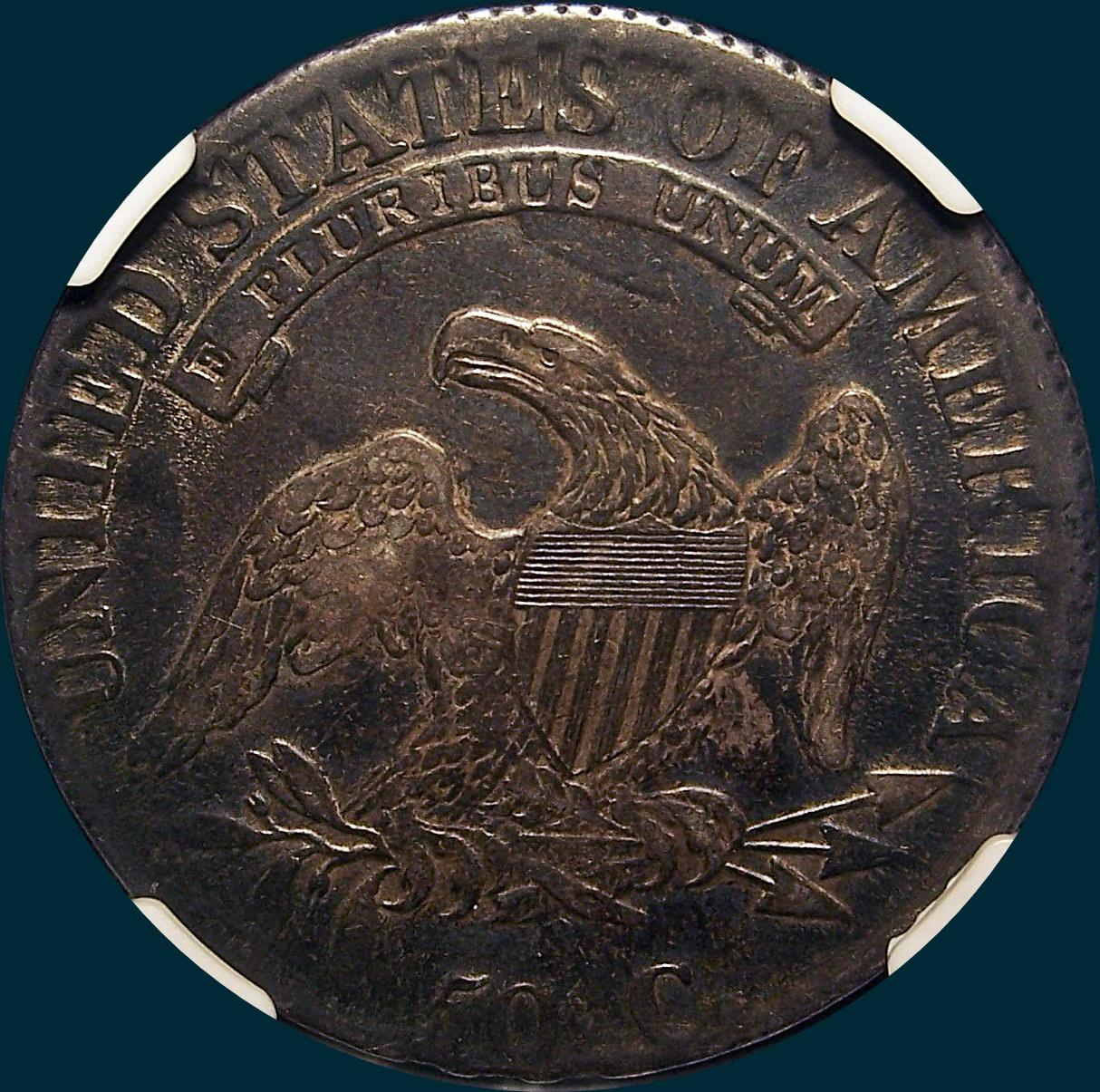
"But seek ye first the kingdom of God and His righteousness and all these things shall be added unto you" Matthew 6:33. Young fellow suffering from Bust Half fever.
BHNC #AN-10
JRCS #1606
Thanks @jacrispies thats just what I was looking for.
It looks like the effect is created as the rim wears down from repeated striking, exposing the beveled dentil edges which are then struck into the planchet. I would love to examine one of these worn early dies themselves but I’m not sure any still exist.
@CaptHenway I read your analysis and was able to follow along. I agree with your observations and feel they were accurate.
What was not factored in to the analysis was the difference in star shapes and sizes. The large cent, being a small coin, has much small stars that have a flatter, plateau-like top surfaces when compared to the bust half. Each star point on the half dollar has a sharp decline to the joining shoulders between each point. Only the tops of the stars are visible on the bust half brockage, showing there was either a weak first strike or strong second strike to eliminate most of the detail of the stars and the bust.
On the other hand, the large cent has most of the stars showing in complete detail on one side of the coin around AMERICA. That simply demonstrates the second strike was unable to fully remove the incuse brockage details. If you look on the other side of the reverse, near UNITED STATES, you would see the pattern clearly matches the metal flow of the bust half brockage. Check out the D in UNITED and the T in STATES. Those letters have the ideal detail left to show the phenomenon you describe.
Overall, although I agree with your observations, I do not feel they adequately oppose the authenticity of the large cent brockage, but they confirm it.
Taking a step back on the debate, are you arguing that this is a vise job? If we are, we can take a step back and focus on the pattern of the metal flow through the legend of the letters. That can prove whether it was post strike damage or pre strike brockage.
"But seek ye first the kingdom of God and His righteousness and all these things shall be added unto you" Matthew 6:33. Young fellow suffering from Bust Half fever.
BHNC #AN-10
JRCS #1606
Watching Stanley Cup. Comment tomorrow.
For discussion purposes below, here is an off-center 1814 cent showing what the upset rim looked like on a cent planchet from 1814:
https://coins.ha.com/itm/large-cents/1814-1c-crosslet-4-s-294-b-1-r1-struck-15-off-center-xf45-pcgs-pcgs-1573-/a/1206-4266.s?ic4=ListView-Thumbnail-071515
All photos courtesy HA archives
I have been looking at the original OP coin to see if the flattening of the detail on the obverse and the convexity around the obverse border could have been caused by the OP coin being given a second strike with a blank planchet atop it, which I think you are saying happened. Is that your hypothesis?
For further discussion, here is a normal 1814 cent from this die pair. Note how the reverse denticles have deteriorated to the point that the holes between the denticles are prominent along the upper half of the reverse.
Closeup of a broken denticles above the ST of STATES
Circulate this reverse down, perhaps even in a slightly more deteriorated die state, and I think you would have something like the row of holes around the rim on the OP coin. Note how the row of holes on the OP coin fades out above the ST of STATES.
If the holes along the reverse rim on the OP can be attributed to a deteriorated reverse die, the next question is why are the incused impressions in the reverse confined to the outer portion of the design? Where is the incused head?
Here is an 1829 Half Cent of the same Classic Head design as the 1814 Cent with a full obverse brockage on the reverse.
That incused head is nice and deep. If this Half Cent were struck again against a normal reverse die, some of that incused head would survive.
I once saw a Turban Head $10 that had been born with a full brockage obverse on the reverse side. Presumably to save the effort of melting it down and remaking a blank planchet the Mint just put it back into the press and gave it SIX more strikes to obliterate the brockage. Under a microscope I counted 7 raised strikes on the obverse and 6 raised strikes on the reverse. Even with the malleability of gold, I could still see a faint outline of the original incused bust.
I do not see any significant remains of an incused bust on the OP coin, just the tops of the curly hair below the bow on the raised strike, which are in line with the incused ring of stars and the 1814 date.
The only possible way that the OP coin could be a mint-made brockage error would involve three planchets, Planchets A, B and C, the OP coin being the result of Planchet B. The following would have to have taken place:
Planchet A enters the coining chamber and is struck. You can call it Coin A if you like. It stays on the reverse (anvil) die.
Planchet B is fed in atop the now-struck Planchet A/ Coin A. It is struck as a full brockage reverse error. You can call it Coin B if you like.
Planchet A/ Coin A leaves the coin press.
Planchet B/ Coin B remains in the coin press and now rests on the reverse (anvil) die.
Planchet C feeds in atop the now-struck Planchet B/ Coin B and is struck, becoming a second full brockage reverse error. Call it Coin C if you like. It and Planchet A/ Coin A are not known.
In this scenario, the upset rim of Planchet C might cause the flattened center and depressed border of Coin B, the OP coin. However, nothing in this highly unlikely scenario can explain the absence of the vast majority of the incused head that should have been in Coin B, some of which should have survived the striking of Coin C.
I am not yet saying what happened to the OP coin. What I am saying is that, in my opinion, it is not a brockage error.
Let me solicit some opinions from other error experts.
TD
"Star Holes," the gripping story of the first inter-galactic donut shop!
Heard back from one error expert who agreed that this scenario would have had to have happened for the piece to be a Mint product.
That said, neither of us can rule it out, unlikely though it is. I am still cogitating.
Anybody else out there have any opinions? What did you think of my explanation of the apparent "incuse denticles?"
Bump.
What if Coin B, after the full reverse brockage strike, stuck to the obverse die and was struck a second time? The obverse would not show any signs of a double strike since it never left the obverse die between strikes, while the reverse would show a strike from the reverse dies over the brockage?
Sean Reynolds
"Keep in mind that most of what passes as numismatic information is no more than tested opinion at best, and marketing blather at worst. However, I try to choose my words carefully, since I know that you guys are always watching." - Joe O'Connor
I'll pull the coin back out and catch up on the comments sometime this week.
"But seek ye first the kingdom of God and His righteousness and all these things shall be added unto you" Matthew 6:33. Young fellow suffering from Bust Half fever.
BHNC #AN-10
JRCS #1606
Hey Sean,
Coin B sticking to the obverse die would not explain the flatness to the obverse of OP coin. If Coin B was stuck to the obverse die, it would have full, undisturbed detail. In reality, the coin has the flatness of a brockage-maker. Perhaps the following photos will help with the discussion.
@CaptHenway I agree with the Coin ABC scenario, that was the exact process I was thinking. I know you are concerned by the lack of central detail from the first brockage, so I was able to find more remains from the central design impression of the first Coin A brockage. I created an exact overlay to help with the illustration.
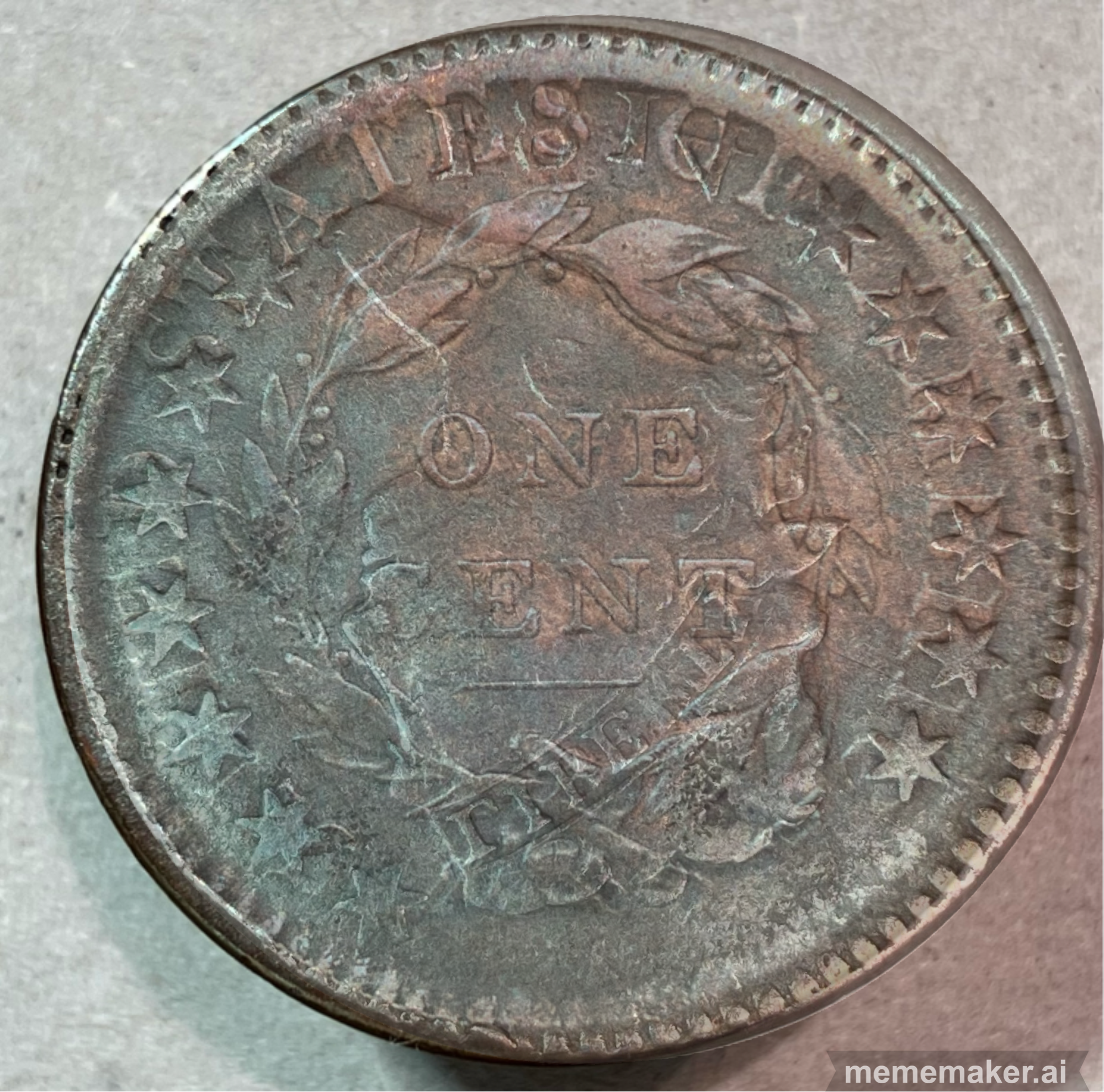
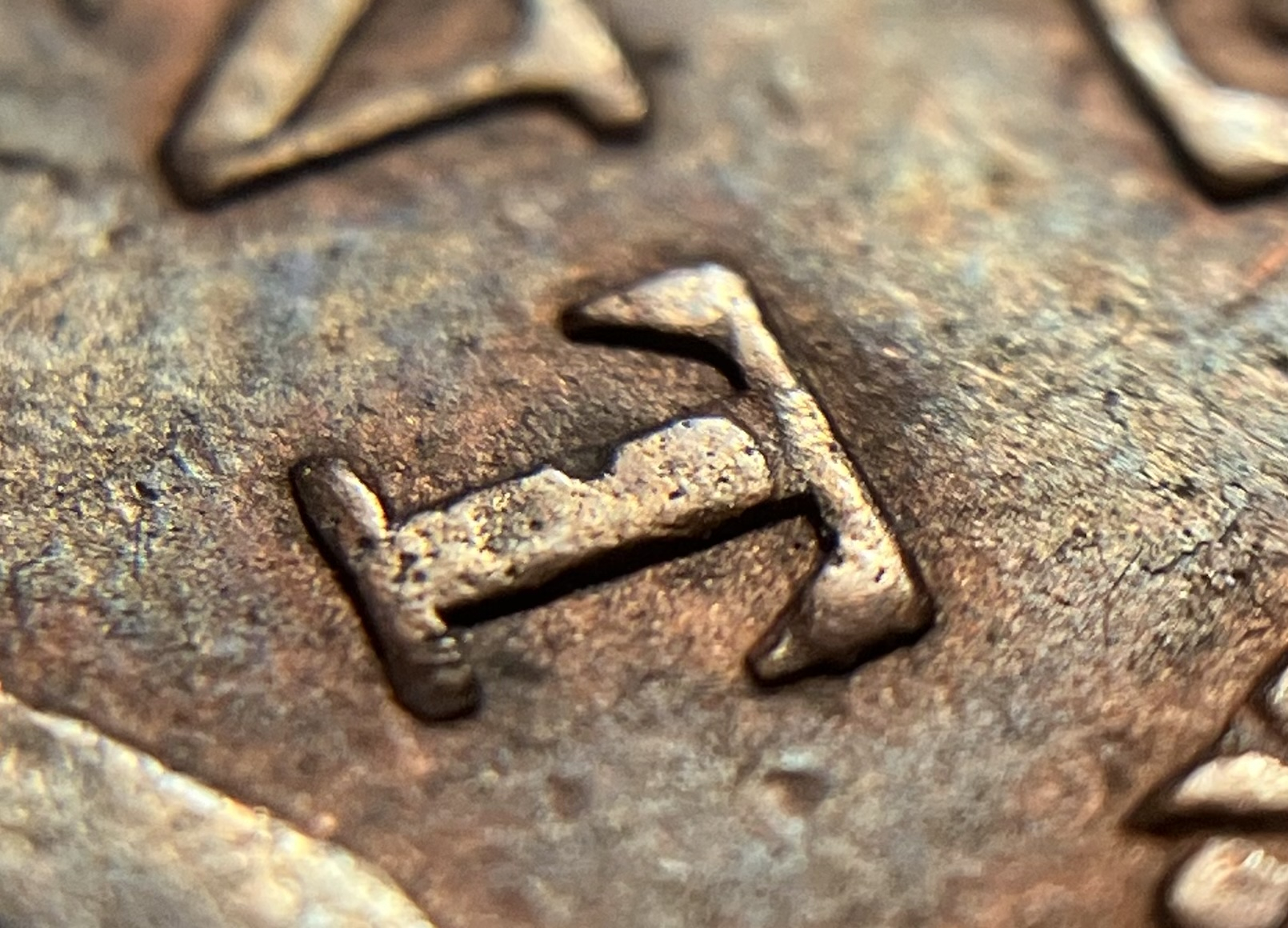
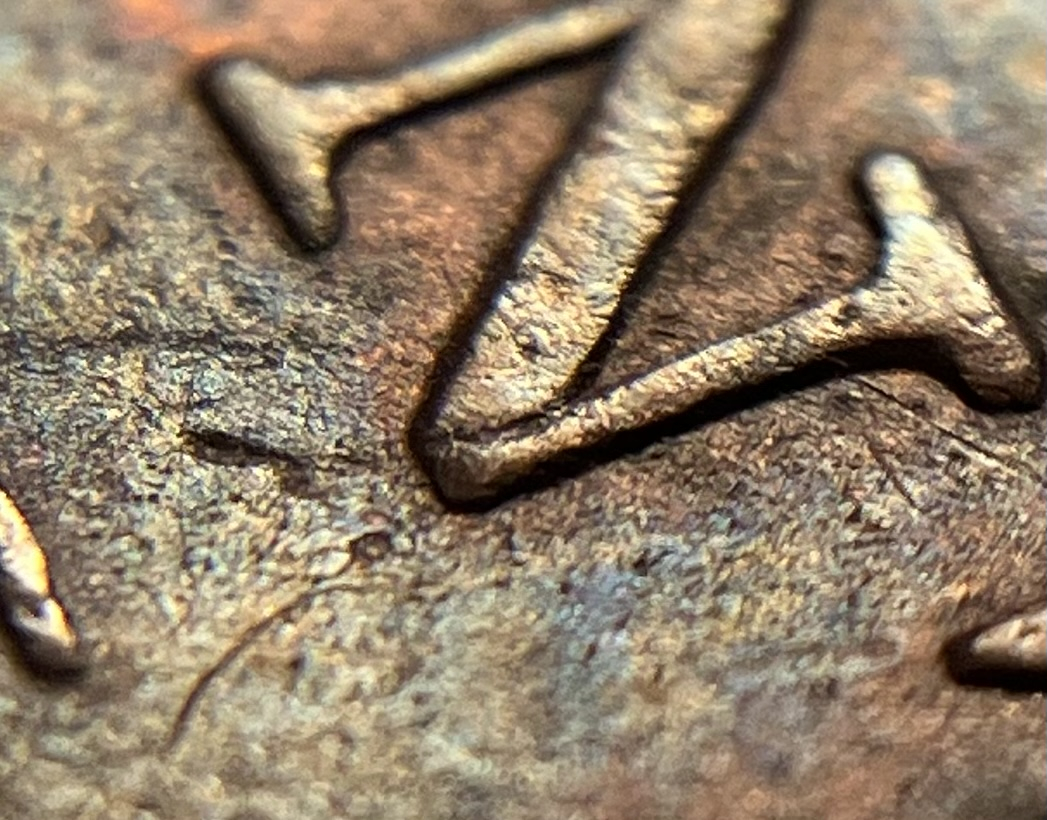
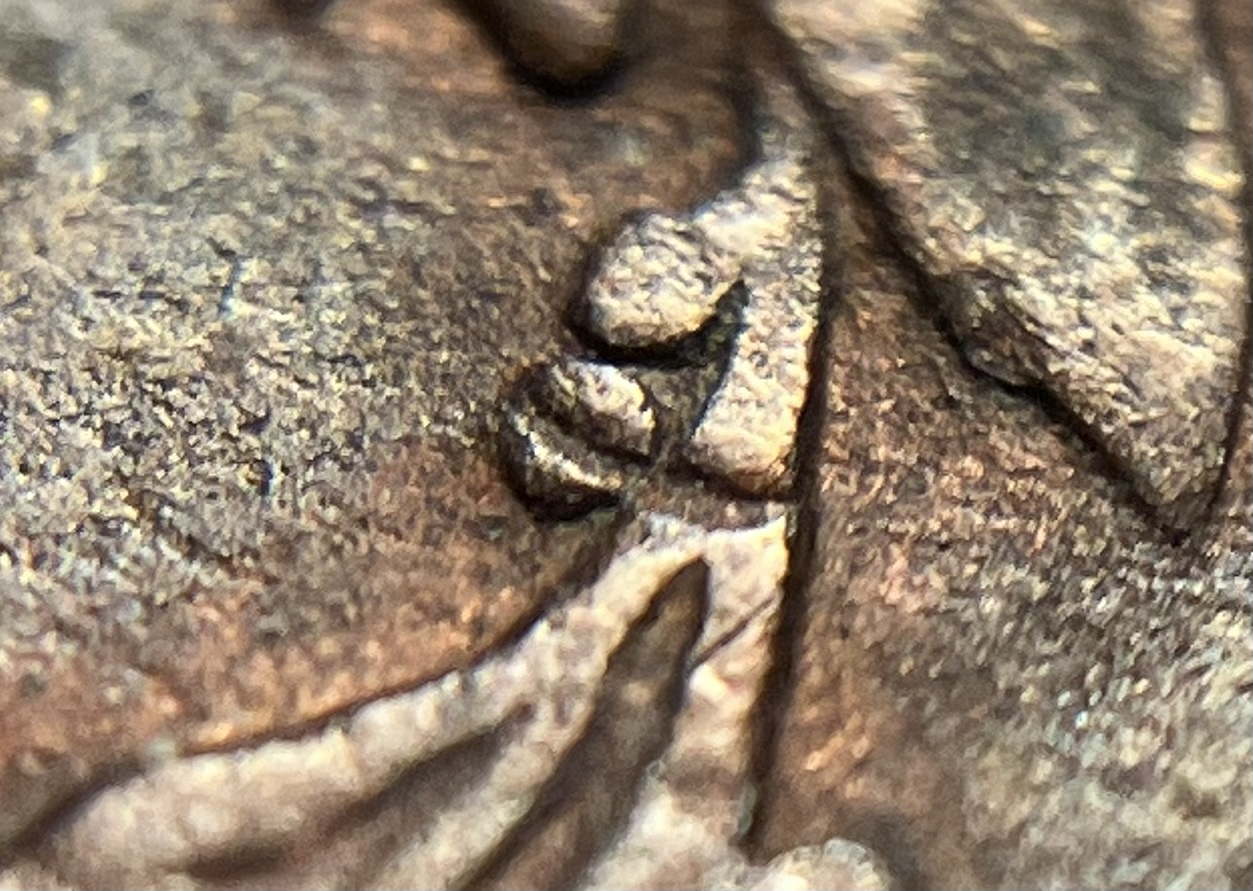
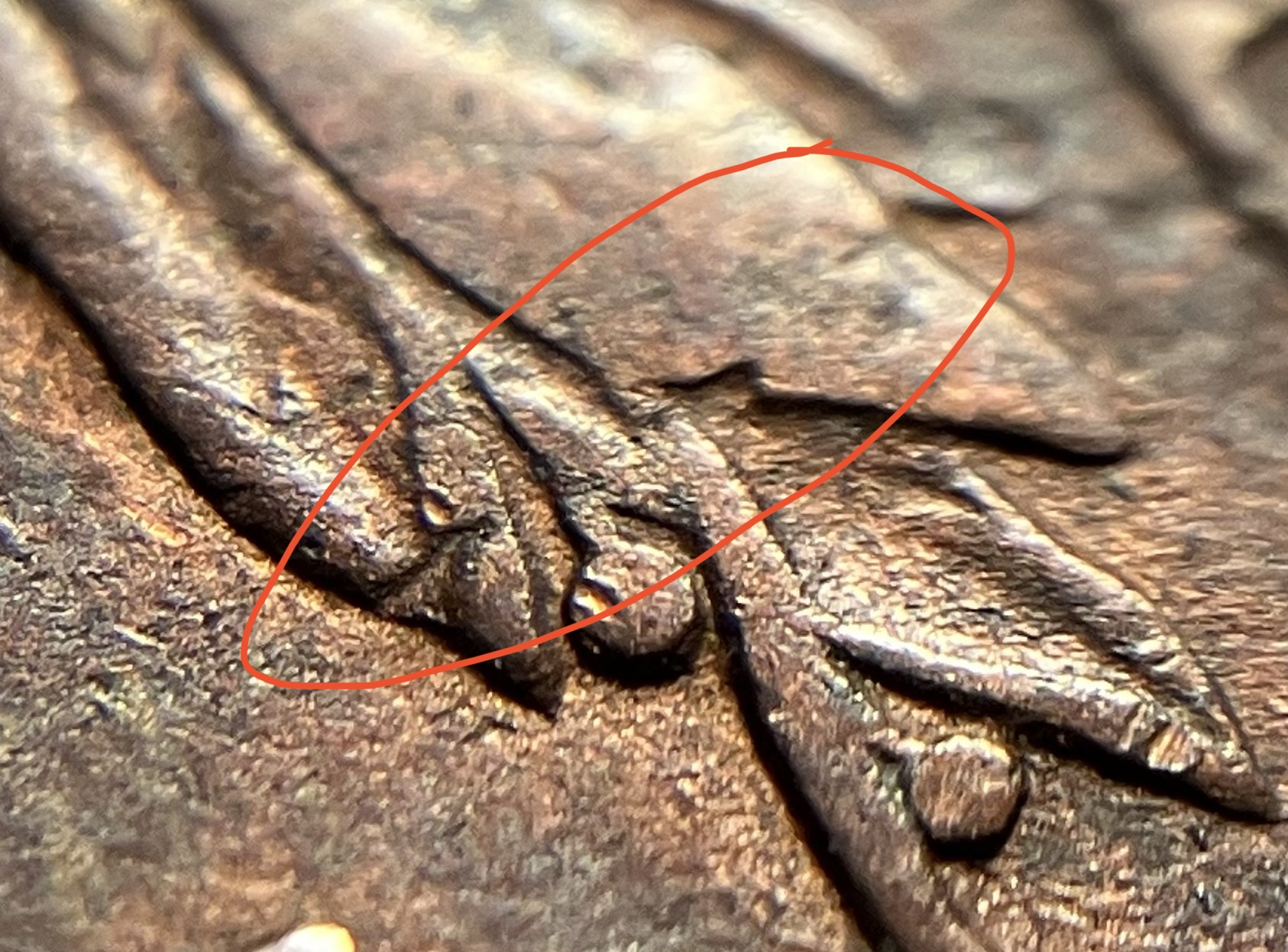
The stars and date line up perfectly as expected. The photo overlay also proves the strange dentilation pattern is from die deterioration and not the first brockage.
The line through the stem of the T, the slit on the N, the notch on the berry, and the line through the leave all match up with the curls or ribbon on the obverse portrait of Miss Liberty. It may be hard to see from the overlay, but I was adjusting the opacity and they match up perfectly. I can adjust the amount of opacity of the overlay and post again if needed.
Note the >1% off center strike on the first brockage to the K1-2 direction. I overlayed a blank planchet in that same mirrored orientation to the obverse, and that matches the incuse rim impression on the left side of the coin, showing the orientation of Coin C.
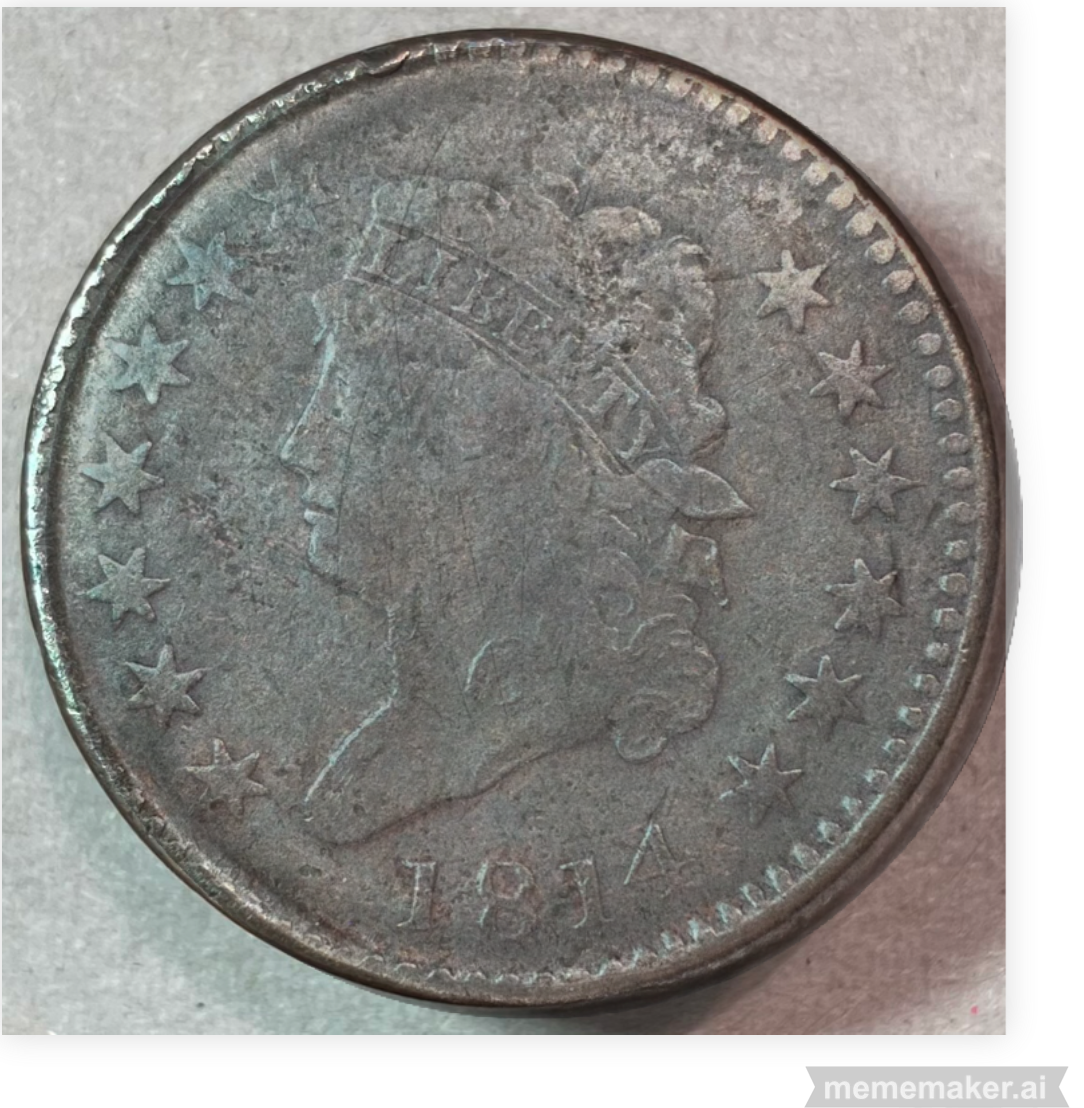
"But seek ye first the kingdom of God and His righteousness and all these things shall be added unto you" Matthew 6:33. Young fellow suffering from Bust Half fever.
BHNC #AN-10
JRCS #1606
Have to go out. Will study it more later.
Could I please have a better shot of the star overlapping the first S of STATES?
@CaptHenway Sure thing, here are a few angles.
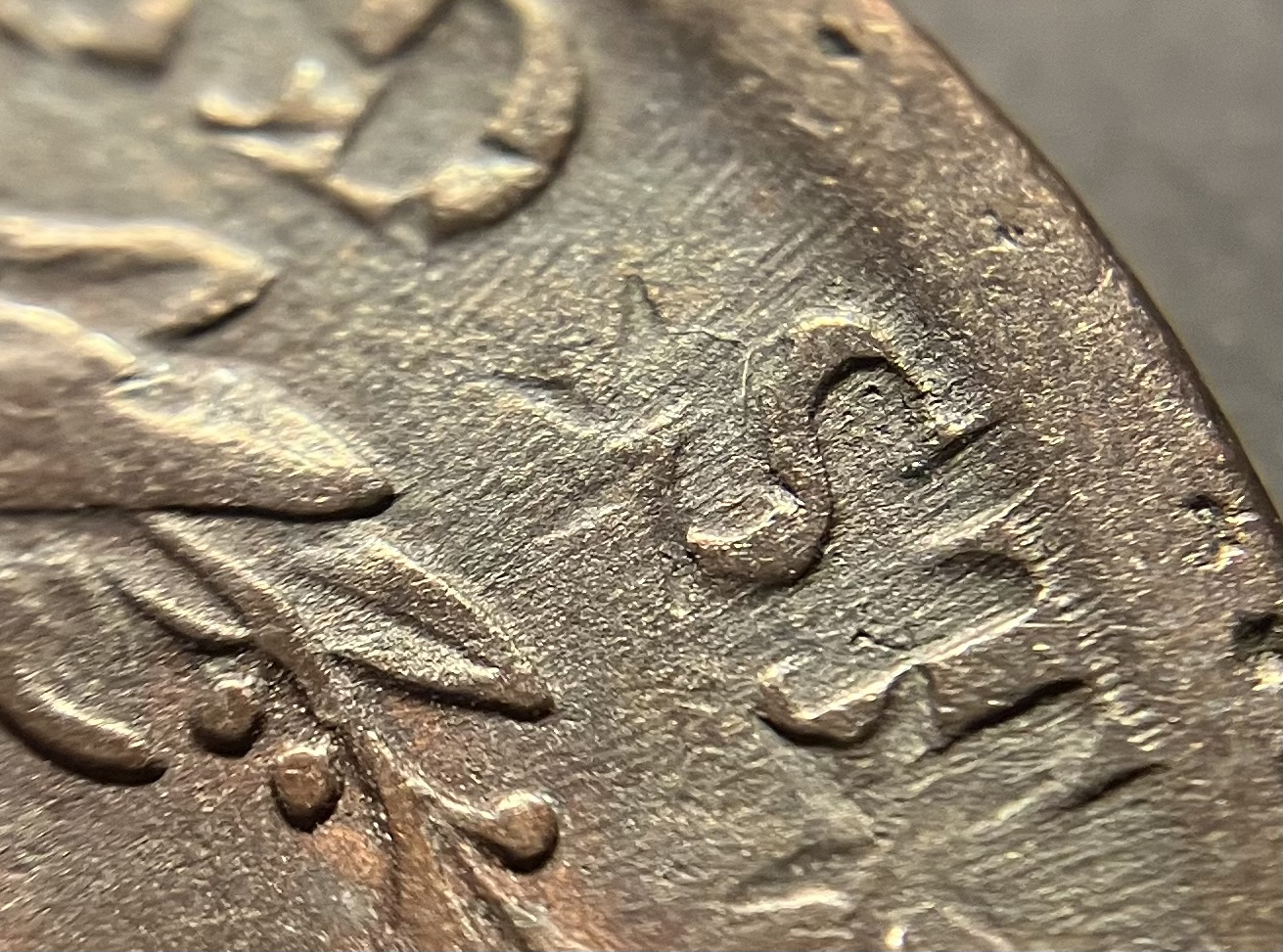
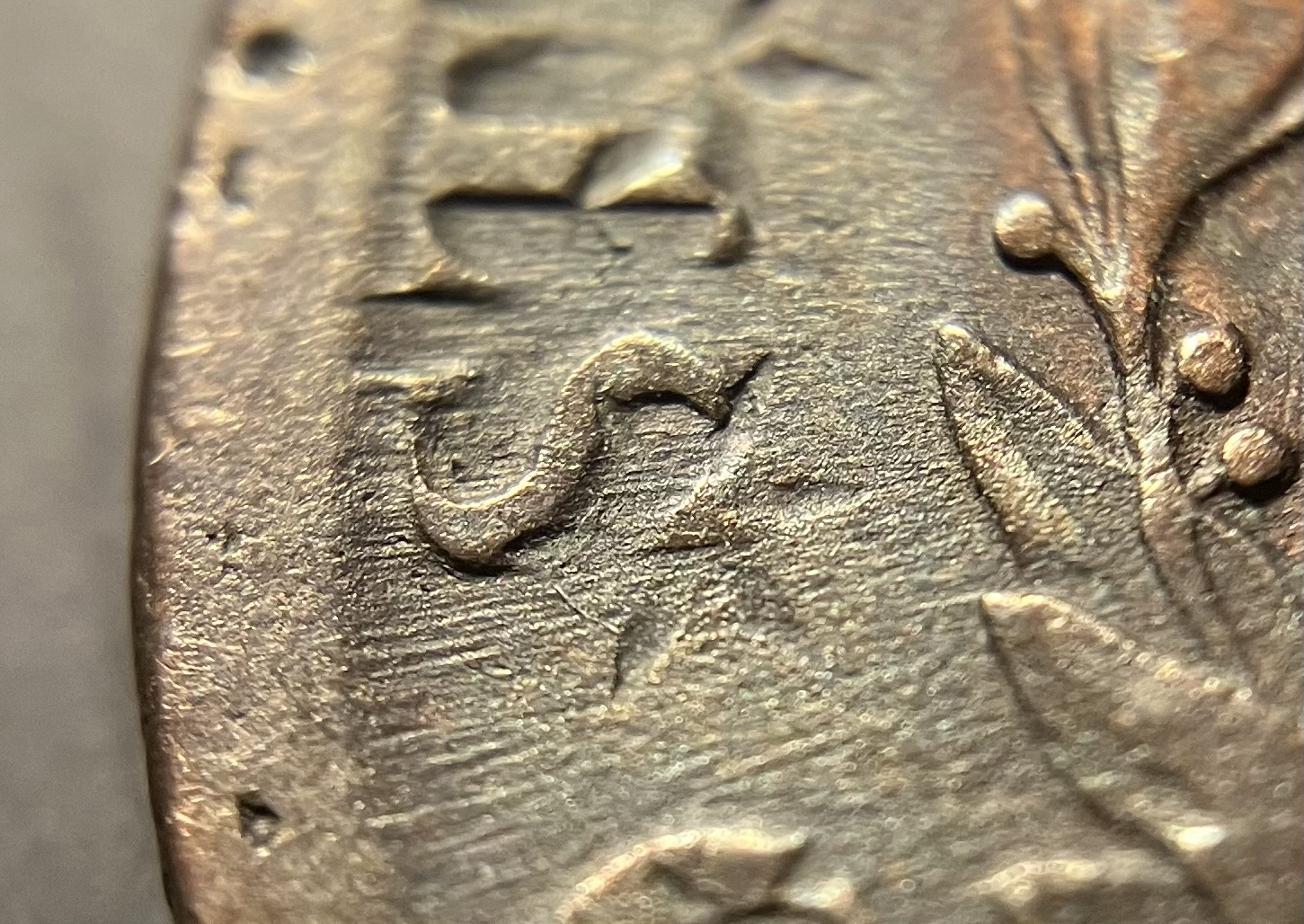
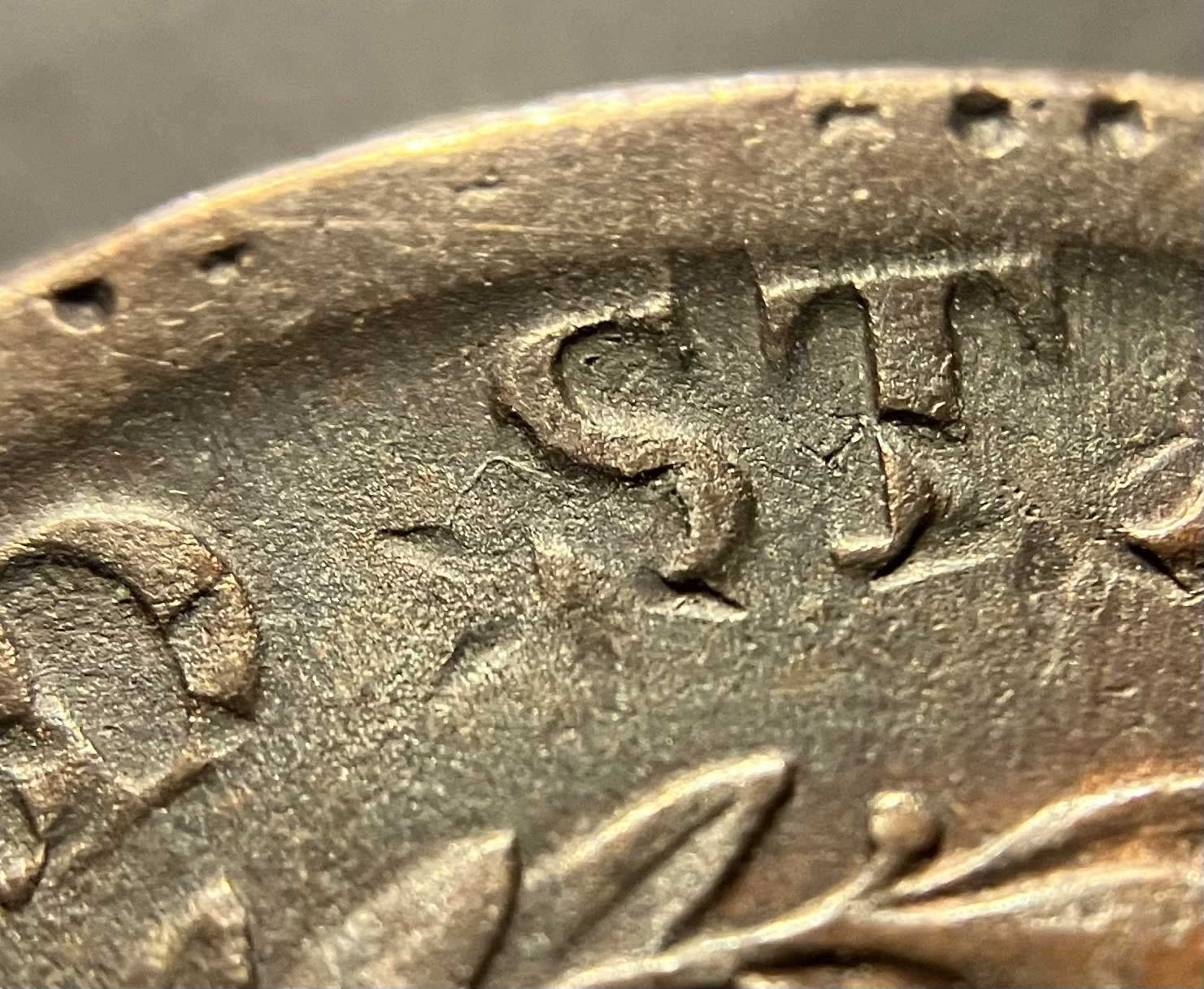
"But seek ye first the kingdom of God and His righteousness and all these things shall be added unto you" Matthew 6:33. Young fellow suffering from Bust Half fever.
BHNC #AN-10
JRCS #1606
Thank you.
Unfortunately, I think that these prove that the coin was not a brockage before it was struck. Look at the die erosion flow lines that run through the incused star. If that star was a hole in the coin prior to the (hypothetical) final strike, the field of the die, with the die erosion, would not have kissed the bottom of that hole during the strike. This tells me that the star was pressed into the coin after the coin was struck, depressing the die erosion lines on the field of the coin but not obliterating them.
That said, I still don't know what the coin IS.
Does the date in the reverse line up exactly with the date on the obverse? If so, then whoever (hypothetically) squeezed the two pieces together understood striking mechanics. It also implies that whoever did it had access to two high grade (possibly Uncirculated) 1814 cents from the same die variety. The circulation wear implies that whatever happened happened when large cents were still in circulation, let us say for the sake of argument prior to the end of the Civil War, though obviously many people held them for many years after that.
We know that certain people at the Philadelphia Mint made novelties for collectors starting shall we say in the late 1830's, but it has always been assumed that there was no market for deliberately created error coins in that era. Perhaps we assumed wrong.
C. Wyllys Betts used to make fantasies in the 1860's by pounding things together (see this thread:)
https://forums.collectors.com/discussion/comment/6946179#Comment_6946179
This piece just does not seem to be connected to him, but I would not rule him out. He could have been practicing something.
So, we still have a mystery on our hands. The game is afoot!
TD
Interesting coin. And top-notch detective work on deciphering what it is!
Large cent collectors: were there ever any small hoards of this die variety reported in Unc?
@CaptHenway Thanks for your observation, and great thinking. I wish I had an analog microscope to take super closeups! I'll try to get a closer photo of the star and S-1. I see what you are saying, but I do not see any die flow lines at the star tips. The center of the star has die flow lines, but it is also very shallow and almost to the level of the field. Keep in mind the planchet quality is porous. The star tips are deeper and have no flow lines. Also, since the planchet flows outward without a retaining collar and the squeezing of the dies, there would be some die flow lines apparent in the shallow areas of the incuse devices.
As far as the alignment of the brockage to the obverse, the brockage is a couple degrees rotated clockwise.
Great question regarding the hoards! That would lead to excess availability of this marriage for coin doctors to play with.
"But seek ye first the kingdom of God and His righteousness and all these things shall be added unto you" Matthew 6:33. Young fellow suffering from Bust Half fever.
BHNC #AN-10
JRCS #1606
The closest I can get with my iPhone SE and my garage sale found loupe.
"But seek ye first the kingdom of God and His righteousness and all these things shall be added unto you" Matthew 6:33. Young fellow suffering from Bust Half fever.
BHNC #AN-10
JRCS #1606
Will try to find some pictures of this area on a normal coin.
The things you find when you are looking for something else. Did you know that the 1814 Plain 4 cents were struck in 1816?
https://www.pcgs.com/news/1814-plain-large-cents-of-1816
Anyways, take a look at the die erosion near the first S of STATES on this PCGS image of an MS63 BN coin .
Here is the section near the S cropped out of the photo above:
There are of course other die states with fewer or different die flow lines as the die erosion grew and evolved, but this shows that at least some 1814 Plain 4 cents did show these radial die flow lines.